Leuven is a historic university town located about 30 km east of Brussels in Belgium’s Flemish Brabant province. Some of Leuven’s top attractions highlighted in the file include the 15th century Town Hall, the UNESCO-listed University Library, ancient beguinages, and the M Museum Leuven displaying art from Gothic to contemporary. Leuven also has a long brewing legacy as the home of major brands like Stella Artois, which offers brewery tours. At night, Leuven’s Old Market Square comes alive as a hub of vibrant restaurants and pubs.
The exciting attractions listed offer many great options for what to do in Leuven. Visitors interested in history and architecture will want to see landmarks like the ornate Gothic Town Hall on the central Grote Markt square as referenced in the summary. The University Library and its iconic red tower rising above the Ladeuzeplein is also an essential sight. For art aficionados, the M Museum Leuven combines historical and contemporary works for a rich cultural experience. Beer enthusiasts will certainly want to tour the original Stella Artois brewery to taste a piece of history, as noted in the summary. Foodies will enjoy the many international cuisine options lining Old Market Square, which transforms into a lively nightlife hub after dark. With festivals, markets, concerts and over 2000 preserved historic buildings, Leuven provides plenty of activities and sights to fill a weekend itinerary.
Although it’s often overlooked in favor of the bigger, shinier cities of Brussels and Bruges, Leuven has so much to offer. It’s known as Belgium’s university town, and as such it’s been a center for academia and culture for centuries. Leuven is only 30 kilometers (18.6 miles) from Brussels and has long been a popular destination for day-trippers from the country’s capital. Once upon a time, its role in the cloth trade made it one of the most important cities of the region. You can still see the grand cloth hall in the center, alongside the stunning university buildings, outlandish town hall, and iconic university library.
Find below the best things to do in Leuven.
- Visit Leuven City Hall. Leuven City Hall is a historic Gothic town hall located in the heart of Leuven, Belgium. It was constructed between 1448-1469 and features ornate decorative stone carvings on its facade. The Town Hall stands on the Grote Markt opposite St. Peter’s Church. Its clock tower has chimed out the hours since the 18th century.
- Explore Botanical Garden Kruidtuin. Botanical Garden Kruidtuin Leuven is a botanical garden founded in 1738. It has over 8,000 plant species from around the world, including medicinal herbs, tropical plants, and rock garden specimens. Visitors enjoy the butterfly house, pond, and peaceful atmosphere right in Leuven’s city center.
- Go Shopping in Leuven. Leuven offers a variety of shopping opportunities along main streets like Bondgenotenlaan and boutique-lined lanes like Mechelsestraat. Markets take place weekly and on Saturdays. The compact historic center makes exploring the various shops easily walkable.
- Tour Park Abbey. Park Abbey Leuven is a 12th century Norbertine abbey with well-preserved historic buildings set amidst scenic ponds and parkland. It houses the Parcum Museum dedicated to Catholic history in Flanders. Guided tours provide insight into the abbey’s heritage.
- Wander Through History in Grand Beguinage of Leuven. The Grand Beguinage is a historic beguinage established around 1232 in Leuven. Designated a UNESCO site, it contains around 100 historic houses and feels like a small town within the city. The scenic, car-free streets provide a peaceful atmosphere.
- Experience Leuven’s Nightlife at Old Market Square (Oude Markt). The Old Market Square is a large public square located in the heart of Leuven’s historic center. Lined with cafes and restaurants with outdoor seating, it is renowned as a lively hub for nightlife. The square’s vibrant atmosphere makes it popular with tourists and locals.
- View the Historical and Contemporary Art at M-Museum. M-Museum combines historical and contemporary art collections, including late-Gothic, Flemish masters, and modern works. Its exhibits aim to foster dialogue between the past and present. The museum is housed in an architecturally impressive complex in central Leuven.
Contents
- 1. Visit Leuven City Hall
- 2. Explore Botanical Garden Kruidtuin
- 3. Go Shopping in Leuven
- 4. Tour Park Abbey
- 5. Wander Through History in Grand Beguinage of Leuven
- 6. Experience Leuven’s Nightlife at Old Market Square (Oude Markt)
- 7. View the Historical and Contemporary Art at M-Museum
- 8. See Rare Books and Manuscripts at Leuven University Library
- 9. Tour the Original Stella Artois Brewery
- 10. Hike the Trails and Spot Wildlife in Heverlee Woods
- 11. Marvel at the St. Peter’s Church
- 12. Pay Respects at the Shrine of Father Damien
- 13. Examine Religious Artifacts at St Pieterskerk Treasury
- 14. Explore the Grounds of Historic Arenberg Castle
- 15. Admire the old Leuven Train Station
- 16. Enjoy Playgrounds, Lakes and Trails at Provinciedomein Kessel-Lo
- 17. Gather and Dine on Great Market Square (Grote Markt)
- 18. Find Gifts and Treats at Leuven Christmas Market
- 19. Hike to Keizersberg Abbey for Panoramic Views
- 20. Discover Flemish Religious History at Museum Parcum
- What are the best museums to visit in Leuven?
- What are the best festivals taking place in Leuven?
1. Visit Leuven City Hall
Leuven City Hall is a historic Gothic town hall located in the heart of Leuven, Belgium. It stands on the Grote Markt, the main square of Leuven, opposite the monumental St. Peter’s Church. The impressive town hall was constructed between 1448 and 1469 in the Brabantine Late Gothic architectural style. It is renowned for its ornately carved stone facade featuring elaborate decorative details crafted in a lace-like pattern.
The town hall is notable for its impressive architecture and intricate exterior stone carvings. The three-story facade features pointed Gothic windows and is decorated with 236 little statues set within canopied niches. The statues depict figures from local history, saints, and former rulers. The corbels supporting the statues are intricately carved with Biblical scenes. Octagonal corner turrets rise up from the steep roofline. The town hall’s clock tower has chimed out the hours over the main square since the 18th century.
Inside, Leuven City Hall contains lavishly decorated rooms. The Gothic Hall features a vaulted ceiling and columns. Many preserved paintings and artworks are on display, including sculptures by notable Belgian artists Constantin Meunier and Jef Lambeaux. Portraits of all Leuven’s mayors since 1794 line the interior walls. The town hall also accommodates an interesting collection of historical artifacts.
Leuven City Hall is located in the heart of Leuven, Belgium. Leuven is situated about 30 kilometers (18.6 miles) east of Brussels. The full address of Leuven City Hall is Grote Markt 9, 3000 Leuven, Belgium.
Visitors can take the train from Brussels to Leuven, which takes about 30 minutes. Leuven’s train station is located around a 15-20 minute walk from the Grote Markt and Leuven City Hall. Public buses also run frequently between Brussels and Leuven. Various buses stop within a short 5-10 minute walk of the town hall.
Leuven City Hall is open to visitors for guided tours every day at 3:00 pm for a small fee. Tours provide an in-depth look at the building and its history. Visitors can also take advantage of additional guided tours offered on Fridays, Saturdays, and Sundays. The town hall can be visited independently or as part of a walking tour showcasing Leuven’s historic architecture and sights. Leuven City Hall is a must-see destination for visitors interested in history, architecture, and medieval art and design. Its central location makes it easy to access as part of a Leuven city tour. The intricate stone carvings and statues showcasing biblical scenes make it notable for those interested in religious artistic works. The interior rooms and preserved paintings will appeal to art aficionados. Leuven City Hall is an impressive site of interest suitable for adults and older children fascinated by medieval architecture and history.
2. Explore Botanical Garden Kruidtuin
Botanical Garden Kruidtuin Leuven is a botanical garden located in Leuven, Belgium. It was founded in 1738 for the University of Leuven, making it the oldest botanical garden in Belgium. Kruidtuin Leuven is situated at Kapucijnenvoer 30, 3000 Leuven.
What makes Kruidtuin Leuven special is its extensive plant collection, which includes over 8,000 species from around the world. Highlights of the garden include the medicinal herb garden, rock garden, greenhouses, and a large collection of tropical plants. One of the most popular attractions is the butterfly house. Kruidtuin Leuven also has a beautiful pond surrounded by lush greenery, making it a peaceful oasis right in the heart of the city.
Visitors can easily reach Kruidtuin Leuven by public transportation or walking. It’s located about a 10-minute walk from the train station and the city center. Those driving can find parking nearby on Sint-Jacob. The garden is also accessible by bus, with a stop right outside the entrance. Visitors can enter Botanical Garden Kruidtuin for free.
Kruidtuin Leuven is suitable for visitors of all ages. Families will appreciate the kids’ play area and activities like the plant-themed audio tour. The serene atmosphere also makes it a great spot for adults to relax and enjoy nature. Kruidtuin Leuven is open daily from 8am-8pm in summer and 8am-5pm in winter, with free admission for all visitors. Botanical Garden Kruidtuin Leuven is a beautiful green escape right in the heart of Leuven, Belgium. Kruidtuin Garden makes for an excellent attraction for visitors looking to experience both natural beauty and local history. Its central location, free entry, and public transportation access make it easy for travelers to enjoy this Belgian botanical treasure.
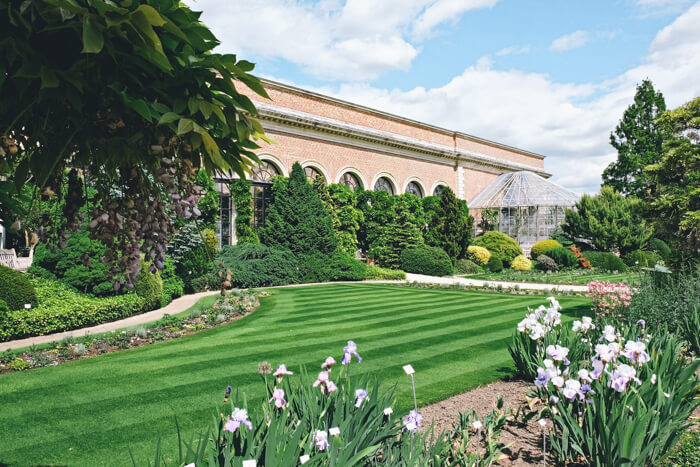
3. Go Shopping in Leuven
Shopping in Leuven refers to the many shopping opportunities available in the city of Leuven. The main shopping streets are Bondgenotenlaan and Diestsestraat, where you’ll find popular chain stores like H&M, Zara, and FNAC. But the best finds are along Mechelsestraat and Vismarkt, which have trendy independent boutiques selling clothes, gifts, and specialty food items. Every Friday, the city hosts a large market in the Brusselsestraat with produce, flowers, and artisanal goods. On Saturdays, there is a flea market around Mathieu de Layensplein.
The shopping experience in Leuven is enhanced by its charming historic city center. As you browse the stores, you’ll come across Gothic architecture, cobblestone streets, and student cafes interspersed between shops. Leuven is very walkable, so it’s easy to explore on foot. The compact size also means you’re never far from the next shop. Tourists enjoy picking up Belgian chocolates, art, and souvenirs. The many clothing boutiques appeal to young locals and students looking for fashionable items. Families can find toys, gifts, clothing, and housewares. Food lovers will enjoy exploring the fresh produce and artisanal food at the markets. To experience shopping in the heart of Leuven, head to the streets surrounding the Grote Markt (Grand Market). This central square is lined with shops, cafes, restaurants, and anchored by the stunning Gothic Leuven Town Hall on one side and St. Peter’s Church on the other.
As you see, there are plenty of options if you want to go shopping in Leuven.
4. Tour Park Abbey
Park Abbey Leuven is a 12th century abbey located just south of the city of Leuven in Belgium’s Flemish Brabant province. The abbey was founded in 1129 at the wish of Duke Godfrey I of Brabant and donated to the Premonstratensian order, also known as the Norbertines. The abbey grounds are 42 hectares / 104 acres and are made up of pathways, ponds, meadows, avenues of trees, and even some farmland. Park Abbey is exceptionally well preserved and contains many historic buildings and artworks dating back centuries.
The abbey church, library, and refectory date back to the 17th century and contain impressive baroque stucco ceilings by the artist Jan Christian Hansche. The cloister contains 20 stained glass windows made in the 1600s by Leuven glass artist Jan de Caumont. Park Abbey also has a large collection of religious art and houses the Parcum Museum, dedicated to the history of Catholicism in Flanders. Additionally, the abbey is set amidst scenic ponds and parkland. The history of the abbey and its grounds is pretty interesting. It was a Norbertine abbey – a religious order of the Catholic Church. It began life with just a small church at its core, which gradually expanded and flourished, at one point reaching 2,472 hectares / 6108 acres in size.
Park Abbey is located at Abdij van Park 7, 3001 Heverlee, just south of the city of Leuven in central Belgium. The abbey can be easily reached by public transportation from Leuven. Buses 4, 5, and 6 from Leuven train station stop at the Park Abbey bus stop, about a 10 minute ride away. The abbey grounds are also accessible by foot or bike, located around a 30 minute walk from the Leuven train station.
Park Abbey has a wide audience interested in history, architecture, art, and nature. Adults and families will appreciate the historic buildings and artwork. The scenic abbey grounds are nice for leisurely strolls. Guided tours are available in several languages for €5, providing insight into the abbey’s history. The Parcum Museum has rotating exhibitions on religious themes and is open Tuesday to Sunday.
The abbey grounds are open daily from 10am to 5pm, except Mondays when closed. Access to the grounds is free. There is a paid parking lot onsite as well as free street parking nearby. The Abbey Shop sells souvenirs and food items produced at the abbey farm. Overall, Park Abbey Leuven offers an affordable outing in a historic setting and is highly recommended for visitors to Leuven seeking to experience Belgian cultural heritage.
5. Wander Through History in Grand Beguinage of Leuven
The Grand Beguinage of Leuven is a historic beguinage located in the south of downtown Leuven, Belgium. A beguinage is a walled community that was built to house beguines, who were lay religious women who lived together semi-monastically but did not take formal vows. The Grand Beguinage dates back to around 1232, making it one of the oldest known beguinages. In its heyday in the 17th century, the Grand Beguinage housed around 300 beguines. Today, the Grand Beguinage is owned by the Catholic University of Leuven and serves as university housing.
What makes the Grand Beguinage of Leuven special is that it is one of the largest and best preserved beguinages in the Low Countries, covering around 7.5 acres. It has the feel of a small town within a city, with its network of cobbled streets, squares, gardens, canals, and almost 100 historic houses. The beguinage is intersected by branches of the Dijle River, adding to its picturesque character. In 1998, along with 12 other Flemish beguinages, the Grand Beguinage of Leuven was designated a UNESCO World Heritage Site in recognition of its cultural significance. Many of the houses were built in the 17th century and feature traditional gabled facades. The beguinage also contains the Gothic Church of St. John the Baptist, constructed in 1305.
The Grand Beguinage is located in the city of Leuven in the Flemish Brabant province of Belgium. It sits just south of the historic downtown area of Leuven. To reach the Grand Beguinage, visitors can take bus lines 1 or 2 and get off at the Heilig Hart bus stop, which is a short 5 minute walk from the site. The beguinage is also within walking distance, about 15 minutes, from Leuven’s central train station. Driving by car, there are nearby paid parking garages such as Bodart and Heilig Hart.
Visiting the Grand Beguinage of Leuven is free and does not require an admission ticket. The only exception is that visitors must purchase a ticket to enter the Church of St. John the Baptist. Overall, the beguinage offers an enriching experience steeped in history and natural beauty in the heart of Leuven. Walking its cobbled lanes transports visitors back centuries to imagine what life was like for the beguines who once called this unique place their home.
6. Experience Leuven’s Nightlife at Old Market Square (Oude Markt)
The Old Market Square (Oude Markt) is a large public square located in the heart of the historic center of Leuven, Belgium. It is one of the most vibrant and iconic squares in Leuven. The Old Market Square is located at Oude Markt 39-40, 3000 Leuven, Belgium.
The Old Market Square has a long history dating back to the 12th century when it was the center of economic activity and trade in Leuven. In 1150, it received official market rights from the Counts of Leuven which allowed markets to be held up to three times a week. Throughout the centuries, the Old Market Square maintained its role as an important marketplace.
Today, the Old Market Square is a lively hub of restaurants, cafes, bars and nightlife. It is completely pedestrianized and lined on all sides by historic buildings decorated with ornate architecture, banners and facades. The square is most well-known for having the highest concentration of drinking and dining establishments anywhere in Leuven, earning it the nickname “the longest bar in Europe.” When the weather is nice, the numerous outdoor terraces quickly fill up with people.
Among the notable buildings framing the Old Market Square is the classicist wing of Leuven’s Old University Hall which overlooks the square. The university library was once housed here until its destruction. On the south end of the square stands the Holy Trinity College with its prominent Baroque facade. Two historic water pumps can also be found – the still functioning Sint-Janspomp and the relic College-pump dating from 1724.
The vibrant atmosphere and abundance of bars and restaurants make the Old Market Square a popular place for locals, students and tourists alike. It is especially lively on weekends and warm summer days when outdoor terraces are full. The square hosts many events year-round including markets, music festivals and outdoor concerts.
Getting to the Old Market Square is easy as it sits right in the heart of historic Leuven. Leuven is located about 20 minutes east of Brussels by train. From the Leuven train station, the Old Market Square is an easy 10 minute walk straight down Bondgenotenlaan. Many buses also service the area and stop right by the square.
The Old Market Square appeals to people of all ages and interests. Students and young people flock to the bars and nightlife. Families and tourists enjoy the historic ambiance, architecture and dining options. Foodies appreciate the wide array of international restaurants and bars. History buffs admire the classic buildings and heritage of the square. With so much to see and do, the Old Market Square offers something for everyone.
While most of the square is open-access, visitors should expect to pay for drinks, meals and events hosted there. There are no admission fees to simply enter the Old Market Square. However, people planning on dining or drinking should expect average Belgian prices at the establishments lining the square. The events and concerts held in the square like the annual Marktrock music festival are typically free and open to the public.
7. View the Historical and Contemporary Art at M-Museum
M-Museum Leuven is an art museum located in the historic center of Leuven, Belgium. The museum opened in 2009 and has a collection of around 46,000 works, ranging from late-Gothic paintings and sculptures to 19th century Flemish masters like Constantin Meunier and Jef Lambeaux. What makes M-Museum Leuven unique is its combination of historical and contemporary art all under one roof. The museum displays its extensive historical collections side-by-side with temporary exhibitions showcasing contemporary artists, creating an interesting dialogue between past and present.
M-Museum Leuven is situated in the heart of the city at Leopold Vanderkelenstraat 28, 3000 Leuven. The museum is housed in an architecturally impressive complex integrating modern buildings designed by Belgian architect Stéphane Beel and historic structures like the former 17th century mansion of Leuven’s mayor. Visitors can easily reach M-Museum Leuven by public transportation, as it is located just a 10 minute walk from Leuven Central Train Station. Parking is also available nearby at Ladeuzeplein.
The museum caters to a wide audience, from children to adults. Family activities like the monthly Family Sundays make it an engaging destination for kids. The museum also offers guided tours and kids’ workshops. Adults appreciate the world-class historical and contemporary art collections. The museum’s central location in Leuven’s vibrant historic center makes it a popular stop for tourists visiting the city. Visitors should plan on spending at least 2 hours exploring the museum’s varied collections and exhibitions.
Admission to M-Museum Leuven costs 12 EUR for adults, with discounted rates available for youth 19-25 years (5 EUR), children under 18 (free), and seniors/students (10 EUR). The museum is closed on Wednesdays. Visitors are advised to purchase tickets online in advance to secure entry.
8. See Rare Books and Manuscripts at Leuven University Library
The Leuven University Library is located in the historic city center of Leuven, Belgium. The library is part of the Katholieke Universiteit Leuven (KU Leuven), which is one of Europe’s oldest and most renowned universities. The Leuven University Library has a long and turbulent history, having been destroyed multiple times since its establishment in 1425. Today, the library is housed in an impressive neo-renaissance building designed by American architect Whitney Warren in the 1920s. The library is located at Monseigneur Ladeuzeplein 21, in the heart of Leuven’s picturesque city center.
The original library contained around 300,000 books. Tragically, this was destroyed in World War I. It was rebuilt in the 20s and the new structure is built in the traditional Flemish Renaissance style.
Today, The Leuven University Library has an extensive collection of over 3 million books, manuscripts, journals, and other readings. Some of its most prized possessions include medieval manuscripts, rare incunabula (books printed before 1501), and oriental manuscripts. The library also holds the largest collection of Japanese books in Europe, donated by Japan in the 1920s to replace materials destroyed during World War I. A highlight is the 63-bell carillon located in the library’s tower – one of the country’s largest. The library also hosts special exhibitions in its gallery spaces. Visitors can also climb the tower to see the carillon and take in views of Leuven from the fifth floor balcony. People can visit the building at certain times and there’s an audio guide to give visitors a tour of the building, including a wartime exhibition and a fantastic balcony with amazing views across Leuven.
9. Tour the Original Stella Artois Brewery
Stella Artois brewery is a brewery located in the city of Leuven, Belgium that produces the popular Stella Artois beer. The brewery has a long and rich history dating back to 1366 when the Den Hoorn brewery was first established in Leuven. This original brewery laid the foundation for the quality and taste that Stella Artois is known for today.
In 1708, Sebastien Artois became the master brewer at Den Hoorn brewery. He later purchased the brewery in 1717 and renamed it Artois Brewery, after his last name. The company stayed in the Artois family for over a century, passing down from father to son. The horn logo from the original Den Hoorn brewery was kept and is still used in the Stella Artois logo today as a nod to the beer’s origins.
It wasn’t until 1926 that the iconic Stella Artois beer was first brewed at Artois Brewery. It was initially created as a Christmas beer and named “Stella” after the Latin word for star. The beer was gifted by the brewery to the people of Leuven over the Christmas holiday. Stella Artois proved to be enormously popular and the brewery began producing it year-round and exporting it to countries across Europe by 1930.
Today, Stella Artois is one of the most recognized Belgian beers around the world. However, the brewery where it all started in Leuven remains an iconic destination for beer lovers visiting Belgium. The Stella Artois brewery is about 1 km / 0.6 miles north of the train station and offers guided tours where you can see how this pilsner beer is created today. The Stella Artois brewery offers interactive guided tours on Saturdays and Sundays that provide visitors with a behind-the-scenes look at how Stella Artois and other beers are produced.
The Stella Artois brewery is located right in the heart of Leuven at Aarschotsesteenweg 20, only about a 10 minute walk from the historic city center. The easiest way to reach the brewery is to take the train to Leuven Station and then walk or take a short bus or taxi ride. Buses 333, 334, 335 and 630 stop nearby at the Leuven Vaartvest bus stop. Another option is to take a taxi.
On the guided tour of Stella Artois brewery , visitors are taken through the various stages of the brewing process, from the brewhouse to the fermentation tanks to the bottling line. Everyone receives a reflective safety vest to wear during the tour. One of the highlights is being able to sample freshly poured Stella Artois straight from the tap at the end of the tour. There is also a gift shop where guests can purchase Stella Artois souvenirs and beer to take home.
The guided tours of Stella Artois brewery Leuven are best suited for adults 21 and over who are interested in beer and brewing. The tours provide a fascinating look at the brewing process and history behind one of Belgium’s most iconic beers. Tickets cost 8.5 euros per person. Private group tours are available on weekdays for a minimum of 15 people. Additionally, student pricing is also offered.
Visiting the original Stella Artois brewery in Leuven is a must for travelers looking to fully experience Belgium’s storied beer culture. With its long brewing legacy and tourist-friendly tours, Stella Artois brewery Leuven provides an engaging and memorable way to taste a piece of history.
10. Hike the Trails and Spot Wildlife in Heverlee Woods
Heverleebos Woods is a forest area located just south of the city of Leuven in the Flemish Brabant province of Belgium. The woods cover an area of 2050 hectare (5065-acre) forest full of stunning shady walking routes and picnic spots. They are primarily made up of oak and beech trees. What makes Heverleebos Woods special is that they are one of the largest contiguous deciduous forests in Flanders. Heverleebos Woods are home to a diverse range of plant species, including ground ivy, Solomon’s seal, celandines, arum lily, wild strawberry, lily of the valley, and lady fern. There is also a significant deer population, which is said to be the oldest in Flanders. In addition, the woods host a wide variety of songbirds and birds of prey.
For families and children, special playground areas have been created within Heverleebos Woods. These areas include ropes, climbing poles, tree stump animals, and giant puzzle trees for kids to enjoy. There is also a 6 hectare zone where dogs can run off-leash. Along some of the trails, visitors can see the mysterious and enchanting tree sculptures created by artist Ad Wouters.
The main entrance to Heverleebos Woods is located off the Naamsesteenweg (N251) on the outskirts of Leuven. The nearest major roadway is the A3/E40 highway, which runs along the northern edge of the woods. The woods can be easily accessed from Leuven by taking bus #1, which stops at the Arboretum Heverleebos on the eastern side of the forest. By car, visitors can park in the lot at the arboretum or along the Naamsesteenweg. Cyclists can also access the woods directly via bike trails leading into the forest.
Once inside Heverleebos Woods, visitors can walk or hike along miles of marked trails that wind through the forest. Shorter loop trails like the Boombal Trail allow you to experience the woods without venturing too far in. Longer point-to-point trails can take you from one side of the forest to the other. Mountain bikers are also welcomed on most trails.
Heverleebos Woods appeals to a wide audience, including nature lovers, families, dog walkers, trail runners, cyclists, and outdoor enthusiasts of all ages. There is no admission fee to access the main trails and forest area. Certain facilities like the playgrounds and dog exercise area may require small fees for use. With its diversity of plant and animal life paired with miles of trails, Heverleebos Woods Leuven provides an easily accessible natural escape right on the edge of the city.
11. Marvel at the St. Peter’s Church
St. Peter’s Church Leuven is a Roman church located in the heart of Leuven, Belgium. It stands on the Grote Markt (Grand Place) opposite the Town Hall. St. Peter’s is renowned for its Brabant Gothic architecture and its many precious art treasures, including two exceptional paintings by 15th-century Flemish artist Dieric Bouts.
The first church on the site was a wooden structure built around 986 AD. After being destroyed by fire in 1176, it was replaced by a Romanesque stone church. Construction of the current Gothic church began in 1425 and spanned much of the 15th century, with architects Sulpitius van Vorst, Jan II Keldermans and Matheus de Layens working on the ambitious project. In 1458 a fire damaged the unfinished building, but work resumed and was practically complete by 1497. St. Peter’s Church suffered severe damage during both World Wars. In 1914 a fire caused the roof to collapse and in 1944 bombing destroyed part of the north side. Extensive restorations have taken place over the past century to repair the war damage and preserve the church’s masterpieces.
The main highlights inside St. Peter’s Leuven are two monumental paintings by Dieric Bouts – The Last Supper (1464-1468) and The Martyrdom of Saint Erasmus (1465). These Renaissance treasures remarkably still hang in their original positions for which they were commissioned over 550 years ago. Other notable artworks are the 15th century Triumphal Cross sculpture attributed to Jan Borman and the elaborate stone Tabernacle Tower built around 1450. The church is also home to various important tombs and mausoleums, including the 13th century tomb of Henry I, Duke of Brabant. In 1998, the chancel and ambulatory were converted into a museum space, enabling visitors to view at close range the sculptures, paintings and religious artifacts.
St. Peter’s Leuven is located right on the Grote Markt (Grand Place) in the heart of Leuven city center. The full address is Grote Markt 3, 3000 Leuven. As a famous landmark right in the middle of town, it is within easy walking distance of shops, cafes, restaurants and hotels. For those traveling by public transport, the church is just 75 meters from the Visit Leuven tourist information office at Naamsestraat 3.
The church is suitable for visitors of all ages and backgrounds who have an interest in Belgian and European art history, Gothic architecture, and Christian heritage. Guided tours are available for school groups, families and adults wishing to delve deeper into the church’s treasures and history.
Entrance to St. Peter’s Leuven is free, making it a very accessible activity for tourists on any budget. The church is open daily, with hours ranging from 10am-4:45pm depending on the day. It is advisable for visitors to check the website or current opening hours before planning their visit.
12. Pay Respects at the Shrine of Father Damien
The Shrine of Father Damien is located in Saint Anthony’s Chapel in Leuven, Belgium. This shrine honors Father Damien De Veuster, a Catholic priest who devoted his life to caring for people with leprosy in Hawaii in the 19th century.
Father Damien was born Jozef De Veuster in 1840 in the village of Tremelo, Belgium. As a young man, he joined the Congregation of the Sacred Hearts of Jesus and Mary and took the name Damien. In 1873, Father Damien volunteered to work at the leper colony on the island of Molokai in Hawaii, where leprosy patients were isolated and often neglected. For 16 years, he ministered to the physical, spiritual and emotional needs of the leprosy patients in Molokai until he eventually contracted the disease himself and died in 1889 at age 49.
After his death, Father Damien became renowned worldwide for his selfless service to the isolated leprosy patients in Hawaii. In 1995, he was beatified by Pope John Paul II and in 2009, he was canonized as a saint by Pope Benedict XVI. To honor Father Damien’s legacy, Saint Anthony’s Chapel in his hometown of Leuven, Belgium houses a shrine and his remains. The chapel is located at Pater Damiaanplein 3, 3000 Leuven. Inside the crypt below the chapel is the tomb of Father Damien, containing his bodily relics. Visitors to the shrine can view displays about his life, from his early years in Belgium to his missionary work in Hawaii. Photos, paintings and interpretive panels chronicle his inspiring story of service.
Saint Anthony’s Chapel can be reached easily on foot or public transportation in central Leuven. It is close to the train station and just south of the historic city center. There is no admission fee to visit the shrine.
13. Examine Religious Artifacts at St Pieterskerk Treasury
The St Pieterskerk Treasury is located inside St Peter’s Church in Leuven, Belgium. St Peter’s Church is situated on the Grote Markt (Grand Place) in the heart of Leuven opposite the Town Hall. The full address is Grote Markt 3, 3000 Leuven.
St Pieterskerk Treasury showcases an impressive collection of religious art and artifacts, mostly related to the history of St Peter’s Church and the city of Leuven. The treasury is home to paintings, sculptures, metalwork, textiles, and liturgical objects dating from the Middle Ages to the present day. Two of the most acclaimed works in the treasury are the 15th-century triptychs “The Last Supper” and “Martyrdom of St Erasmus” by Flemish Primitive painter Dirk Bouts. These two masterpieces were commissioned for display in St Peter’s Church and have remained in Leuven for over 500 years. Their delicate features and attention to detail showcase the immense talent of one of the region’s most revered artists.
Other highlights include the gilded brass tomb monument of Henry I, Duke of Brabant from the 13th century, located in the ambulatory. There is also an ornate hexagonal stone tabernacle soaring 12.5 meters high that dates to around 1450.
To reach St Pieterskerk Treasury, visitors can take the train to Leuven’s main station, which is located just over 1km away. From there, it’s about a 15-20 minute walk. Several buses also stop right near St Peter’s Church, including lines 2, 4, 5, 6, 7, 8 and 9. The treasury is open to the public from Monday to Saturday 10am-4:30pm, and Sundays from 11am-4:30pm. It’s closed on Wednesdays.
Admission to the treasury costs 3 euros per person. Discounted prices are available for seniors, students, children, and groups. Combo tickets can also be purchased that include access to the treasury plus the main church interior and/or tower climb. Free admission is offered to visitors with a disability and their companion.
The St Pieterskerk Treasury appeals most to adults interested in art, history, and culture. The collection provides insight into Catholic religious traditions and showcases exquisite craftsmanship. The items also tell the story of Leuven’s evolution into one of Europe’s leading cultural cities.
Travelers with limited time can appreciate the treasury’s highlights in 30-45 minutes. For those wishing to examine the works more closely, 1-2 hours would be recommended. The artifacts are well-lit and displayed with informative signage in multiple languages. Visitors in wheelchairs can access the ground floor exhibition spaces but upper levels require climbing some stairs.
14. Explore the Grounds of Historic Arenberg Castle
Arenberg Castle Leuven is a 16th century château located in Heverlee, a suburb of Leuven, Belgium. The castle is situated at Kasteelpark Arenberg 1, 3001 Heverlee, Belgium. It is known for its Flemish Renaissance architecture featuring brick and sandstone details.
What makes Arenberg Castle special is its long and rich history. The lords of Heverlee built the first castle on the grounds in the 14th century. In the early 1500s, the Croÿ family acquired the property and built the current castle between 1455-1515, which was innovative for its time. It has undergone changes over the centuries under various owners. In the 1600s, the castle came into the possession of the prominent Arenberg family when Charles III’s sister Anna of Croÿ married into the family. Arenberg Castle remained in the family until World War I when it was occupied, later seized by the Belgian government, and sold to the Catholic University of Leuven in 1921.
Today, Arenberg Castle serves as the main building for the University’s Faculty of Engineering and houses classrooms, studios, and offices. Parts of the interior contain original 16th century architectural details. The castle is surrounded by Arenberg Park which encompasses the science and technology campus. Together they create an impressive combination of history, innovation and scenic green space.
Arenberg Castle is located on the outskirts of Leuven, about 3 km southwest of the city center. The castle can be easily accessed by car, public transportation, bike or on foot.
The grounds of Arenberg Castle and park are open to the public year-round free of charge. Visitors can explore the scenic gardens and exterior of the historic castle. While tourists cannot enter the interior of the castle, the public areas provide a glimpse into the architecture and history. Like most Castles in Belgium, so does Arenberg Castle appeal to visitors of all ages who have an interest in Flemish design, medieval history, and university life.
15. Admire the old Leuven Train Station
Leuven Train Station is a major railway station located in the city of Leuven, Belgium. The station is situated on Martelarenplein in the historic city center of Leuven, about 20 kilometers east of Brussels. Leuven Train Station is a stop on several important rail lines in Belgium, including line 36 which connects the cities of Liège and Leuven. It also serves as an important connection point for the Brussels Regional Express Network trains.
Leuven Train Station was first opened in 1837, making it one of the oldest railway stations still in operation in Belgium. The current station building dates to 1879 and was designed by architects Henri Fouquet and François-Henri Laenen in an eclectic style combining elements of French Classicism and Italian Renaissance architecture. This ornate historic station building with its large dome is considered an architectural landmark in Leuven and is protected as a listed monument.
Leuven Station was the fifth busiest train station in Belgium as of 2019, with over 33000 daily passengers. It serves as an important stop on the main line between Liège and Brussels and also provides local and regional rail connections to destinations throughout Flanders. The station has high-speed international connections via the Thalys and Eurostar trains to Paris, Amsterdam, Cologne and other European cities. Leuven Station also connects passengers to Brussels International Airport just 13 minutes away by train.
Leuven Train Station serves all types of visitors to the city – international tourists, visiting students and academics, business travelers, commuters, and locals.
16. Enjoy Playgrounds, Lakes and Trails at Provinciedomein Kessel-Lo
Provinciedomein Kessel-Lo Leuven is a large public park located in the Kessel-Lo district of Leuven, Belgium. The park is situated at Holsbeeksesteenweg 21, 3010 Kessel-Lo, just northeast of central Leuven.
Provinciedomein Kessel-Lo offers a wide range of recreational activities, making it a popular destination for families and children. The park contains multiple playgrounds designed for different age groups, all featuring exciting play equipment and structures made from natural materials. Kids can explore pirate ship-themed play areas as well as traverse rope bridges and climb play heaps. The park also has a fun traffic garden where children can safely practice road safety on small electric cars. During summer months, Provinciedomein Kessel-Lo operates a heated outdoor paddling pool for young swimmers.
In addition to playgrounds, Provinciedomein Kessel-Lo contains lakes where visitors can rent row boats, pedal boats, and paddle boats. The park has dedicated petanque courts and areas for mini-golf, rollerblading, and skating. Tennis courts are available to rent by the hour during high season. Fishing is allowed on one of the lakes for a fee. Throughout the grounds are walking trails circling the lakes and connecting to picnic areas.
Provinciedomein Kessel-Lo offers orienteering courses for beginner and advanced levels. An experienced geocacher maintains several geocaches hidden cleverly on the grounds for those who enjoy treasure hunting adventures. The park also contains a small farm with friendly goats, donkeys, and horses that delight children.
Admission to enter Provinciedomein Kessel-Lo Leuven is free. There are parking fees in effect from April 1 to September 30. Attraction fees apply for the pool, boat rentals, mini-golf, tennis, fishing, and traffic garden. Visitors can reach the park via buses stopping at Provinciaal recreatiecentrum. Drivers can take the E40 motorway to Exit 21 Leuven, then follow signage the short distance northeast to the park.
17. Gather and Dine on Great Market Square (Grote Markt)
Great Market Square (Grote Markt) is the central square in the heart of Leuven, Belgium. It is located between the Oude Markt and the Rector De Somerplein, near both the Bondgenotenlaan and the Muntstraat. Great Market Square has been an important gathering place in Leuven since the 14th century. It was originally part of the cemetery for St. Peter’s Church, which is located on the square. In 1427, the city bought part of the cemetery to create a central market square and meeting point for the main trade routes through Leuven.
Several iconic buildings are located around Great Market Square, most notably the Town Hall of Leuven. Construction on the ornate Gothic Town Hall began in 1448 and took over 20 years to complete. Great Market Square also contains St. Peter’s Church, a Gothic church dating from the 15th century, and several medieval guild houses.
Today, Great Market Square retains its role as the bustling heart of Leuven. It is a pedestrian-only square with lined-up with cafes, bars and restaurants, many with outdoor seating. It hosts markets, festivals and events throughout the year that bring locals and visitors alike to the square. Great Market Square a must-visit for anyone exploring the city.
Great Market Square is located right in the historic city center of Leuven, about a 10-15 minute walk from Leuven Train Station. The square can be easily reached on foot from most hotels and attractions in the central part of Leuven. For those traveling by car, there are several paid parking garages located just a few blocks away. Public transportation like buses and taxis can also drop visitors off right on Great Market Square.
The square itself is free and open to the public at all times. There is no admission cost to walk around and admire the buildings. To go inside some of the attractions like the Town Hall tower, there are small admission fees. The bars, cafes and restaurants each have their own pricing.
18. Find Gifts and Treats at Leuven Christmas Market
Leuven Christmas Market is an annual holiday market held in the historic city center of Leuven, Belgium. The Christmas market takes place on the Ladeuzeplein and Hooverplein squares in the heart of Leuven’s medieval town center. Leuven Christmas Market runs for about two weeks in December each year. The market typically opens daily around noon and runs until 10 or 11pm, with slightly shorter hours on Sundays.
The market is an easy 10 minute walk from the Leuven train station. Leuven Christmas Market is one of the oldest and most charming Christmas markets in Belgium. It features around 140 festively decorated wooden stalls selling gifts, decorations, local foods and drinks. Shoppers can find artisanal crafts, jewelry, toys, sweets, Belgian beer, gluhwein, and festive treats. The market has a lively but cozy atmosphere, lit up at night with sparkling lights.
A highlight is the spruce forest with Santa’s house, located on the Hooverplein square. Kids can visit Santa Claus in his little cottage and tell them their Christmas wishes. There is also an old-fashioned carousel that children will enjoy riding. The market offers live music performances on an outdoor stage as well. Strolling the market in the evening offers a magical Christmas ambience.
Leuven Christmas Market is best suited for people of all ages looking to get into the holiday spirit. Families with children will appreciate Santa’s house and the rides. Couples and friends will enjoy browsing the stalls together and sampling Christmas treats. Tourists visiting Belgium will get a taste of local culture. Locals can support local artisans and find unique holiday gifts.
Admission to Leuven Christmas Market is free. Certain rides and attractions may charge a small fee. Food, drinks and shopping at the market stalls are all additional costs.
19. Hike to Keizersberg Abbey for Panoramic Views
Keizersberg Abbey Leuven is a 19th century Benedictine monastery located on Keizersberg hill in the northern part of the university town of Leuven, Belgium. The full address is Mechelsestraat 202, 3000 Leuven. The abbey sits on the site of a former castle and Knights Templar commandery. Its park offers beautiful panoramic views of Leuven below. The abbey’s giant statue of the Virgin Mary is a recognizable landmark visible from many parts of the city.
The abbey was formally established in 1899 by monks from the nearby Maredsous Abbey. However, the site has religious connections going back much earlier. In the 12th century, a commandery of the Knights Templar order was built there. Later in 1312, it became a base for the Knights Hospitaller order. The French secularized the commandery in 1798. In the late 19th century, Benedictine monks acquired the land to construct the current Keizersberg Abbey, incorporating remains of the medieval commandery.
To get to Keizersberg Abbey, take bus #5 or #6 from Leuven station and get off at the Leuven Keizersberg stop. The abbey is about a 4 minute walk from there. Keizersberg Abbey appeals most to adults interested in history, architecture, and scenic views. Visitors can explore the public park’s trails and vantage points overlooking Leuven for free during open hours. Access to the abbey building itself is only possible via guided tour by appointment. The abbey park is open daily, making it easy to visit at your convenience.
The abbey is also known for its statue of the Virgin Mary and its connection to famous figures like Blessed Columba Marmion. The abbey has survived fires, wars, and damage over the centuries to become one of Leuven’s most iconic landmarks.
While the abbey building itself has restricted access, anyone can enjoy panoramic views of Leuven from its surrounding park for free. The park is open daily with no admission fee. Visitors should be respectful of the private abbey grounds while enjoying the public areas.
20. Discover Flemish Religious History at Museum Parcum
Museum Parcum is an art museum located in the Park Abbey in Heverlee, just outside the city center of Leuven, Belgium. The museum displays art and artifacts related to the history of religion, art, and culture in Flanders and aims to encourage dialogue about religious heritage in today’s diverse society.
What makes Museum Parcum special is its location within one of the best preserved medieval abbey complexes in Europe. The Abbey of Park was founded in 1129 and has been continuously inhabited by Norbertine canons since then. The museum is housed in the former rectory as well as the newly renovated west wing of the abbey buildings. Visitors can admire the perfectly intact 17th century stucco ceilings by Jan Christiaan Hansche as they explore the exhibits.
The museum’s collection includes over 12,000 paintings and other religious artwork from churches, abbeys, and cloisters all over Flanders. The pieces span fifteen centuries and provide insight into the rich religious culture and heritage of the region. Museum Parcum aims to bring this heritage to life by displaying the collection through rotating thematic exhibitions that connect the past to relevant contemporary themes and issues.
Museum Parcum is located at Abdij van Park 7, 3001 Heverlee, in the municipality of Leuven, Flemish Brabant, Belgium. The city of Leuven is situated about 30 kilometers (18.6 miles) east of Brussels. Visitors can take buses 4, 5, 6 or 630 from Leuven train station and get off at the “Abdij van Park” stop, which is right at the museum’s entrance.
The museum appeals to adults interested in art, history and culture, including students and academics. The exhibitions aim to foster dialogue between people of all backgrounds and beliefs. The museum also offers guided tours and activities tailored for school groups and families with children.
Admission to Museum Parcum costs €12 for adults, €10 for seniors and students, and €7 for youths aged 12-18. Children under 12 enter for free. Reduced rates are available for teachers, guides, members of cultural organizations, and residents of Leuven. The museum is open Tuesday to Sunday from 10am to 5pm and is closed on Mondays.
What are the best museums to visit in Leuven?
Listed below are the best museums in Leuven.
- M-Museum. M-Museum Leuven combines historical and contemporary art all under one roof. Located in an architecturally impressive complex in central Leuven, it displays its extensive historical collections side-by-side with temporary exhibitions of contemporary artists. Its over 46,000 works range from late-Gothic paintings and sculptures to 19th century Flemish masters. The museum aims to create an interesting dialogue between past and present.
- Museum Parcum. Museum Parcum located at Park Abbey in Heverlee displays religious art and artifacts from churches, abbeys and cloisters all over Flanders. Its collection of over 12,000 pieces spans fifteen centuries, providing insight into the region’s religious heritage. Rotating thematic exhibitions connect the past collection to relevant contemporary themes to encourage dialogue. Visitors can admire the museum’s pieces while exploring one of Europe’s best preserved medieval abbey complexes.
- Histaruz. Histaruz Leuven is a medical history museum located in Leuven, Belgium. It displays the historical archives and heritage collection of the University Hospitals Leuven (UZ Leuven). The museum contains over 9,000 fascinating medical objects as well as just as many photos, documents, and books that illustrate the evolution of medicine and healthcare over the past century. The collection includes medical instruments, research tables, wheelchairs, cabinets, and pharmaceutical items dating from the 1850s to post-World War II. It shows how the Leuven University Hospitals grew from just a few beds to become one of the largest university hospitals in Western Europe. Histaruz Leuven is located at Kapucijnenvoer 35, 3000 Leuven, Belgium on the Sint-Rafaël campus of UZ Leuven. The museum is housed in the former pathology institute building from the early 20th century. There are restored early 20th century hospital rooms to explore and unusual antique medical devices on display that some younger visitors may find unsettling. Histaruz Leuven used to be free to enter but now charges a small admission fee. Tickets cost 2 euros for adults and admission is free for children under 12 years old when not visiting as part of a school group. Highlights of Histaruz Leuven include an 85 year old auditorium where thousands of doctors and nurses were trained, a collection of old medical books dating back to the 1850s, and a fully outfitted historical pharmacy from the 19th century courtesy of the Faculty of Pharmaceutical Sciences.
- Museum of Zoology. The Museum of Zoology Leuven is located at the Catholic University of Leuven in Belgium. The museum displays the university’s extensive zoological collection, which contains around 6,000 preserved animal specimens and skeletons. The museum’s shell collection, comprising shells from native and foreign species, is particularly impressive. Museum of Zoology also provides a systematic overview of the animal kingdom, showcasing various animal groups from sponges to mammals. The museum’s history is closely tied to Leuven’s Koningscollege (King’s College), where the university’s first zoological cabinet was established in 1817. Under the patronage of King William I, collections were purchased from England, France and Germany to expand the museum’s exhibits. Many specimens were added during the tenure of Professor Pierre-Joseph Van Beneden, who lived in the Koningscollege from 1851. Unfortunately, about half of the museum’s collection was lost during World War II, when a bombing destroyed part of the exhibits. The remaining 5,000 specimens were later supplemented through additional acquisitions. The Museum of Zoology Leuven is located at Charles Deberiotstraat 40, 3000 Leuven, Belgium. The museum can be visited for free during the university’s operating hours, Monday to Friday from 8am to 5pm. It is closed on weekends and holidays. The museum does not charge an admission fee. However, donations are appreciated, as the museum is not subsidized and relies on visitor support to continue its operations.
- Scouts & Gidsen Museum Leuven. Scouts & Gidsen Museum Leuven is a museum dedicated to the history of scouting and guiding in Belgium. It has an extensive collection of artifacts, documents, uniforms, flags and insignia related to the scout movement. The museum is located in the former chapel of the St. Gertrude’s Abbey in Leuven, Belgium. The full address is Sint-Geertruiabdij 5, 3000 Leuven. Scouts & Gidsen Museum Leuven houses a remarkable collection that provides an overview of the scouting movement in Belgium and internationally. It contains over 4,000 books and publications related to scouting in several languages. The museum regularly organizes temporary exhibitions focused on particular themes or periods in scouting history. It is considered one of the leading scout museums in Europe. Scouts & Gidsen Museum Leuven preserves and presents the heritage of scouting for purposes of study, education and enjoyment. Visitors can learn about the guiding principles and rituals of scouting. The museum experience allows former and current scouts to rediscover scouting traditions and reflect on how the movement has evolved. Entry to Scouts & Gidsen Museum Leuven is free for all visitors. It is open every Sunday afternoon from April to October. The opening hours are from 1 pm to 5 pm. Guided tours for groups are available on request in Dutch, French, English and German. Visitors planning to come on Sundays are recommended to check the museum website for updated opening hours. Scouts & Gidsen Museum Leuven also participates in heritage events like Open Monument Day when special tours may be organized.
- St Pieterskerk Treasury. The St Pieterskerk Treasury in Leuven contains an impressive collection of religious art and artifacts, mostly related to the history of St Peter’s Church and Leuven. Located inside St Peter’s Church on the Grote Markt, it includes paintings, sculptures, metalwork, textiles, and liturgical objects from the Middle Ages to present. Two highlights are 15th century triptychs “The Last Supper” and “Martyrdom of St Erasmus” by Flemish painter Dirk Bouts, which have remained in the church for over 500 years.
- De Bibliotheektoren. The De Bibliotheektoren (Library Tower) houses the Humanities and Social Sciences library at the Catholic University of Leuven (KU Leuven). Opened in 2012, this modernist triangular tower was designed by Belgian architects Robbrecht en Daem. The Library Tower contains reading rooms, group work spaces, archives, a conference center and offices over its 17 floors. Its geometric exterior covered in reflective glass has become an architectural landmark in Leuven’s cityscape.
What are the best things to do in Leuven within 24 hours?
Listed below are what to do in Leuven for a day:
- Visit the M-Museum Leuven: The M-Museum Leuven, located at Leopold Vanderkelenstraat 28, is an unmissable destination for contemporary art enthusiasts. The museum is located in the city centre and boasts a modern architectural design that beautifully complements its rotating exhibitions. Whether one is a seasoned art enthusiast or a casual visitor, the M-Museum offers a rich cultural experience that is well worth the time. Admission fees vary and there are discounts available for students and seniors.
- Ladeuzeplein and the University Library: The Ladeuzeplein and the University Library are iconic landmarks in Leuven. The grand square of Ladeuzeplein is always open to the public and serves as a bustling hub for students, tourists and locals alike. The University Library, a symbol of resilience rebuilt after World War I, stands majestically in the square. It’s an excellent location for people-watching or enjoying a cup of coffee in one of the nearby cafes.
- Old Market Square: The Old Market Square, known as the “longest bar in the world,” is the epicentre of Leuven’s vibrant nightlife. The square has many bars, cafes and eateries, each offering a unique atmosphere. Whether one is in the mood for a quiet pint or a lively night out, the Old Market Square has something for everyone. It’s a fantastic place to experience the local culture and socialise.
What is the ideal visit duration in Leuven?
Leuven is an ideal destination for a weekend visit (2 days). Leuven packs in plenty to see and do without being overwhelming. Leuven is a compact university town and is very walkable, with most key attractions clustered within a 1 kilometer radius of Leuven’s Grand Market Square. Visitors can tour the 15th century Gothic Town Hall, climb the UNESCO-listed library tower, and explore ancient beguinages. Art lovers may visit the M Museum Leuven, while beer enthusiasts can tour the renowned Stella Artois brewery.
At night, Old Market Square comes alive with students flocking to its lively pubs and restaurants. With regular trains from Brussels (20 minutes), Leuven makes an easy and rewarding weekend trip from Brussels. Its small size means all key sights are reachable on foot.
What is the best things to do in Leuven with kids or toddlers?
Find below the top things to do with kids or toddlers in Leuven.
- Provinciedomein Kessel-Lo. Provinciedomein Kessel-Lo is an excellent park for entertaining kids and toddlers in Leuven. Children can spend hours exploring exciting play areas like the pirate ship-themed structures with slides, lookout towers, tunnels and more. Make believe comes to life in this adventure playground. Another area features a fun traffic garden where kids can safely drive small electric cars, learning road skills just like mom and dad. When they need a break, families can take a ride on the paddle boats at the lake or walk the scenic trails circling the water. With miniature golf, petanque, rollerblading areas and other activities, Provinciedomein Kessel-Lo offers plenty to keep young ones happily occupied for a full day.
- Museum-M. Museum M has a monthly Family Sunday events plus hands-on kids’ workshops. Family Sundays allow kids to participate in themed activities related to current exhibitions at the museum. Workshops have let children try printmaking, photograph cardboard sculptures they built, and create artworks inspired by Mondrian. The museum also provides storytelling sessions focused on artwork in its collection, accompanied by crafts, music or drama games. Museum-M offers guided tours for families and school groups too. By providing multisensory ways to interact with art, the museum piques children’s creativity and makes learning about art fun.
- Heverleebos Woods. The playground zones integrated into Heverleebos Woods provide the perfect outlet for kids to burn off energy. The forest playgrounds feature exciting equipment like high climbing frames and poles, balancing beams, rope ladders, and large woven willow structures in imaginative animal shapes. Kids can spend hours scaling, jumping, and playing on the challenge course elements. Or they can opt for more low-key play at the creative puzzle tree stations. The forest trails winding through oak and beech trees make for nice short walks with toddlers when it’s time for a picnic snack break. With its combination of playground equipment and natural woods, Heverleebos delights both active and nature-loving children.
When is the best time to visit Leuven?
Leuven experiences a temperate oceanic climate, with mild temperatures throughout the year. The warmest month in Leuven is July, when average high temperatures reach 23℃ (73°F). The coldest month is January, when average low temperatures dip to 2℃ (35°F).
Leuven sees rain year-round, though the wettest month is December with around 3 inches of rainfall. The driest month is September which gets only 1.9 inches of rain on average. Days are shortest in December with just 8 hours of daylight, while June sees the most sun at over 16 hours per day.
The best months to visit Leuven for pleasant weather are May, June, July, August and September. Average highs range from 18℃ to 23℃ (64°F to 73°F) during these months. Rainfall is moderate, humidity is lower, and sunshine hours peak in July at over 9 hours per day. Visitors can enjoy warm, sunny days for sightseeing and outdoor activities during the summer.
While July and August are the warmest months, they also draw more tourists. Visiting in late spring or early fall means smaller crowds and lower prices on accommodations and attractions. May and September both still offer mild temperatures in the 60s and 15+ hours of daylight. Rainfall picks up slightly in September, but the weather is generally comfortable for exploring Leuven and its old town, museums, cafes and historic sites.
What are the best festivals taking place in Leuven?
Find below the best festivals in Leuven.
- Rock Werchter. Rock Werchter is a 4-day rock music festival held annually in late June/early July in the village of Werchter, just 13.6 km (8.4 miles) away from Leuven. The 2023 edition takes place from June 29 to July 2 and features headliners like Red Hot Chili Peppers and Arctic Monkeys. Rock Werchter began in 1974 as a one-day event and has grown into one of Belgium’s largest music festivals, attracting around 150,000 attendees each year. Rock Werchter is considered one of the best music festivals in Belgium.
- Marktrock. The Marktrock music festival is a 3-day event held annually in mid-August in the city center of Leuven, Belgium. Occurring in the main market square, Marktrock began in 1982 and has grown into one of Europe’s largest urban music festivals with over 350,000 attendees. The free festival showcases Belgian and international alternative rock, pop and Dutch language acts on multiple stages.
- Leuven Beer Month. Leuven Beer Month is a month-long beer celebration held each April in Leuven, Belgium. Key events include the Zythos Beer Festival on April 22-23 and the Leuven Innovation Beer Festival on April 29-30. Leuven Beer Month offers visitors a chance to sample beers from over 100 Belgian breweries.
- Beleuvenissen. Beleuvenissen is a free, 3-evening outdoor music festival held annually in July in the historic center of Leuven, Belgium. Occurring on Friday nights, Beleuvenissen features live pop, rock, hip hop and electronic music performances on stages in Leuven’s old town squares. The festival draws tens of thousands of attendees, primarily locals and students.
- Leuven Jazz Festival. Leuven Jazz Festival. is a 10-day jazz festival that takes place each March in Leuven, Belgium. The festival features jazz concerts by international and Belgian musicians in venues throughout Leuven. In addition to concerts, Leuven Jazz Festival hosts jazz films, exhibitions and other events, with free admission to many.
Rock Wechter
Rock Werchter is an annual rock music festival held in the village of Werchter, located just 13.6 km (8.4 miles) far from Leuven in Belgium. The festival takes place in the Werchter Festivalpark each summer, usually over 4 days during the last weekend of June or first weekend of July. Rock Werchter 2023 is scheduled from June 29th to July 2nd.
The first Rock Werchter festival was held in 1974 as a one day event. Over the years it has grown to become one of the largest music festivals in Belgium, attracting around 150,000 attendees each year. The festival features multiple stages with live performances from popular rock, indie, pop and electronic music acts. Headliners in 2023 include Red Hot Chili Peppers, Arctic Monkeys, Muse, Liam Gallagher and Queens of the Stone Age.
In addition to music performances, Rock Werchter offers camping facilities, food stalls and bars on site. Tickets start from around 200 EUR for a 4 day pass. This includes access to the festival and campsites but does not cover camping equipment. Accommodation in nearby Leuven is available as an alternative to camping.
The Rock Werchter festival has won multiple awards over the years including the Arthur Award for Best Festival at the International Live Music Conference. It is recognized as one of the top rock music festivals globally, having previously hosted acts like Metallica, Rammstein, Radiohead, Pearl Jam and Coldplay.
Marktrock music festival
Marktrock is an annual music festival held each year in mid-August in the city of Leuven, Belgium. Leuven is located about 30 kilometers (18.6 miles) east of Brussels. Marktrock takes place over three days, usually the weekend closest to August 15th. The festival’s name comes from the Dutch word “markt” meaning “market”, as it is held in the main market square and surrounding streets in Leuven’s historic city center.
Marktrock showcases a diverse lineup of Belgian and international alternative rock, pop, and Dutch language music acts. The festival features multiple stages in Leuven’s central Oude Markt and Ladeuzeplein squares, as well as other public spaces around the city center. Marktrock began in 1982 as a small local music event but has grown considerably over the past 40 years, attracting over 350,000 attendees in recent years and becoming one of Europe’s largest urban music festivals.
The festival is free to attend, with the exception of the main stage in the Oude Markt which requires a ticket for entry. Ticket prices in 2022 were 25 € ($27, £22) per day. Marktrock is organized by Live Entertainment, an events company based in Zaventem, Belgium. The festival lineups have featured both emerging local bands as well as major international acts like Lou Reed, Iggy Pop, Pet Shop Boys, and Coolio over the years. Key performers in 2022 included Sam Fender, Balthazar, and Sylvie Kreusch.
Leuven Beer Month
Leuven Beer Month is an annual month-long celebration of beer held in the city of Leuven, Belgium. Leuven Beer Month is taking place every April and features two major beer festivals – the Zythos Beer Festival and the Leuven Innovation Beer Festival – as well as numerous other beer-related events throughout the month.
Leuven Beer Month takes place in the city of Leuven. Leuven is often referred to as the “beer capital” of Belgium due to its long brewing history and the presence of major breweries like AB InBev, brewer of Stella Artois, which has roots dating back to 1366 in Leuven. In 2023, Leuven Beer Month run for the entire month of April. The main Zythos Beer Festival takes place on April 22nd-23rd, while the Leuven Innovation Beer Festival occurs on April 29th-30th.
Leuven Beer Month welcomes beer lovers from around the world to take part. Visitors can sample beers from over 100 Belgian breweries at the Zythos festival and unique beers from international craft brewers at the Innovation festival. Locals, tourists, and university students also participate in the many events. Most events during Leuven Beer Month are free to attend or have a low cost. Access to the main Zythos and Innovation festivals costs €10-20 ($11-22, £9-18) including beer tokens. Guided brewery tours and beer tastings around the city are typically €5-15 ($6-17, £5-14).
Leuven Jazz Festival
The Leuven Jazz Festival is an annual music festival held in the city of Leuven, Belgium. Leuven is located approximately 30 kilometers (18.6 miles) east of Brussels. The jazz festival takes place for 10 days each year, usually in March. In 2023, the festival run from March 9-19.
The Leuven Jazz Festival celebrated its 10th anniversary in 2023. The festival features concerts by acclaimed international and Belgian jazz musicians performing in venues throughout the city of Leuven. Venues include the concert halls 30CC/Schouwburg and Het Depot, as well as local pubs, boats, museums, and even private living rooms hosting intimate concerts.
In addition to concerts, Leuven Jazz offers activities like jazz films, family shows, exhibitions, and jazz literature events. The festival highlighted jazz guitarists in 2023, including artists such as Julian Lage, Dans Dans, and Albert Vila. Belgian jazz label Igloo Records marks its 40th anniversary at the festival with vinyl reissues and performances.
Leuven Jazz Festival offers free admission to many events, including all concerts on the final Sunday held in private living rooms across Leuven. Ticket prices for standard concerts range from free up to approximately 20€ ($22, £17). A combination ticket granting access to the full 10-day festival program costs approximately 70-75€ ($77-82, £63-66).
Beleuvenissen
Beleuvenissen is a free outdoor music festival held annually in the historic city center of Leuven, Belgium. The festival takes place in the city of Leuven. Beleuvenissen occurs on three Friday evenings during the month of July. Each evening of the festival runs from approximately 7:30 PM to 11 PM. The festival features live music performances by both local and international artists and bands. Music genres vary, including pop, rock, hip hop, and electronic music. Stages are set up in the squares of Leuven’s old town, including the Oude Markt, Grote Markt and Vismarkt. Attendees consist primarily of Leuven residents and visitors, especially many of the city’s over 50,000 university students. Since the festival is free and open to the public, people of all ages come to enjoy the concerts and lively atmosphere.
Tens of thousands typically attend Beleuvenissen each year. The festival has taken place annually since 1989, with the exception of 2020 due to the COVID-19 pandemic. While there is no admission fee to attend Beleuvenissen, food, drinks, and merchandise are available for purchase from vendors in the squares. The city government and the non-profit organization Leuvenement organize and fund the music festival. Overall, Beleuvenissen offers three evenings of free live music performances that energize Leuven and kick off the summer festival season.
Is Leuven and Belgium expensive for a visitor?
While Belgium, including the city of Leuven, can be considered relatively expensive compared to some other countries, it’s not as pricey as cities like Singapore or London. The cost of living in Leuven is generally lower than in major European cities. However, keep in mind that the actual costs can vary depending the lifestyle and preferences of the visitor. It’s always a good idea to plan and budget accordingly.
PIN FOR LATER

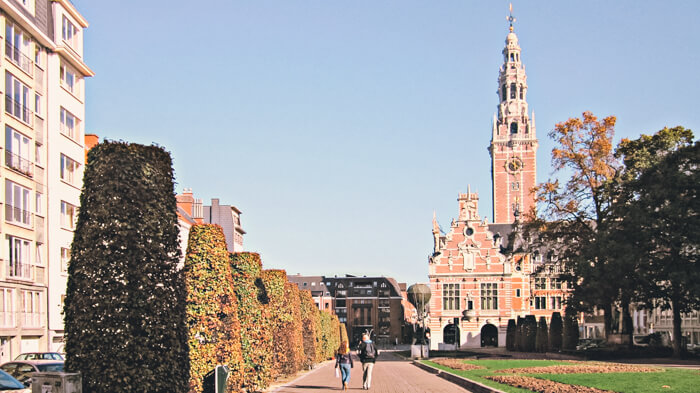
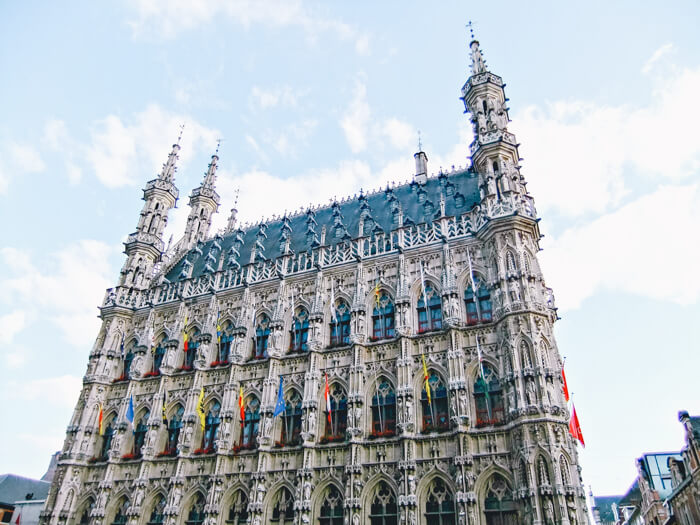
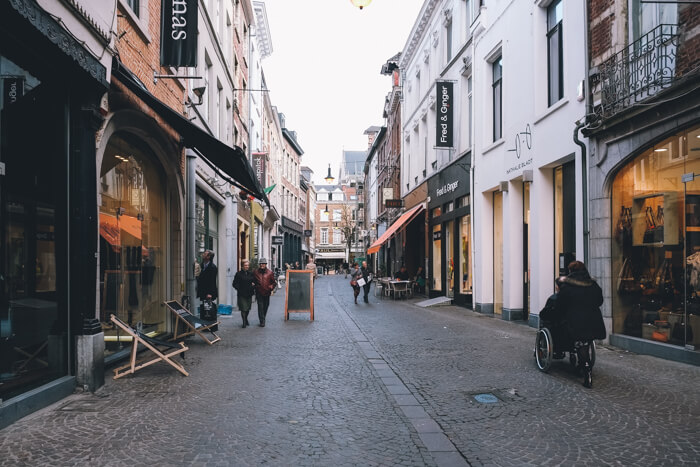
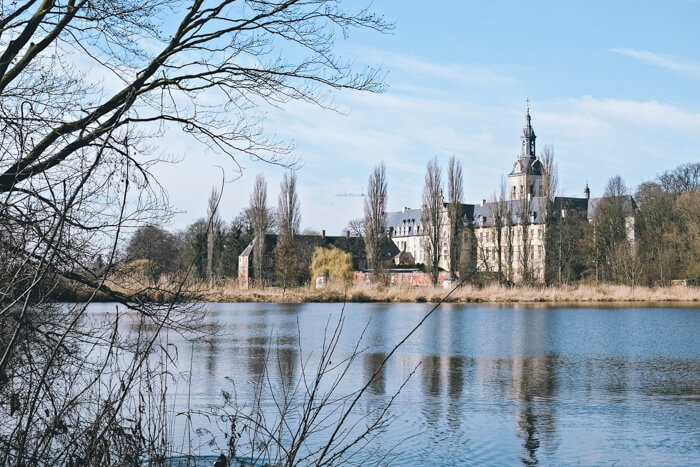
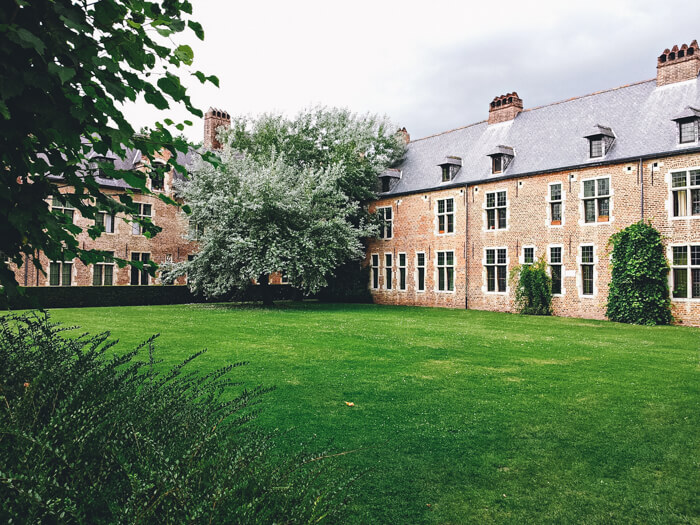
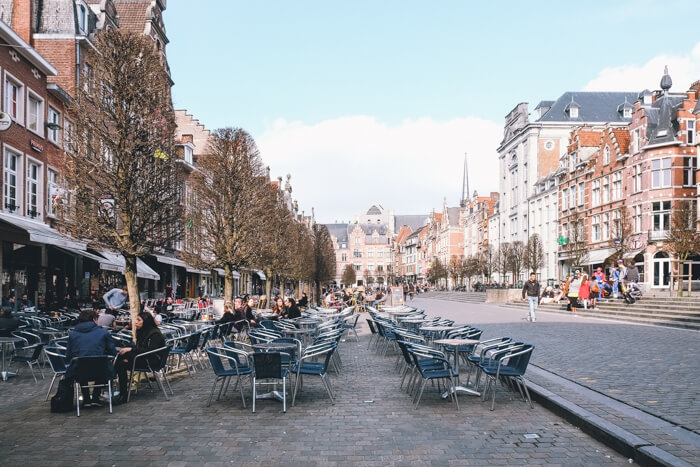
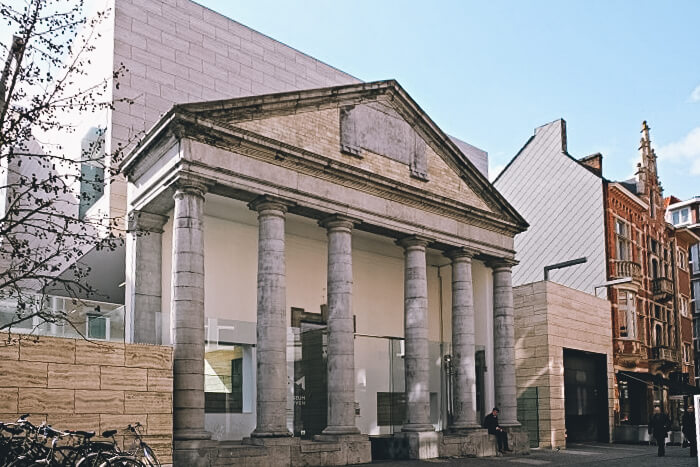
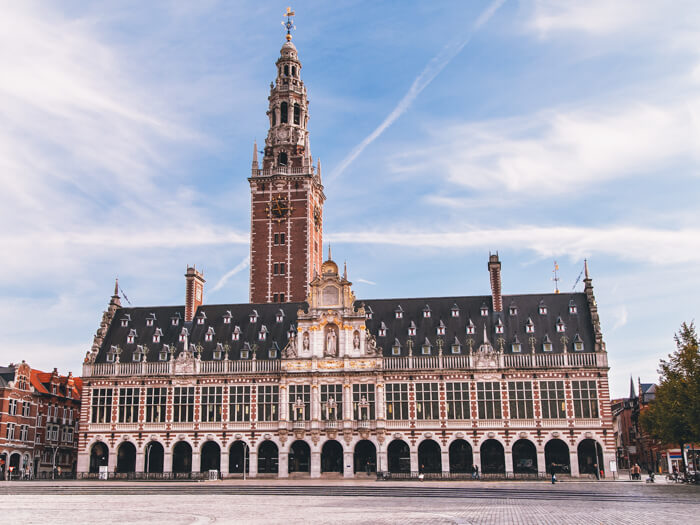
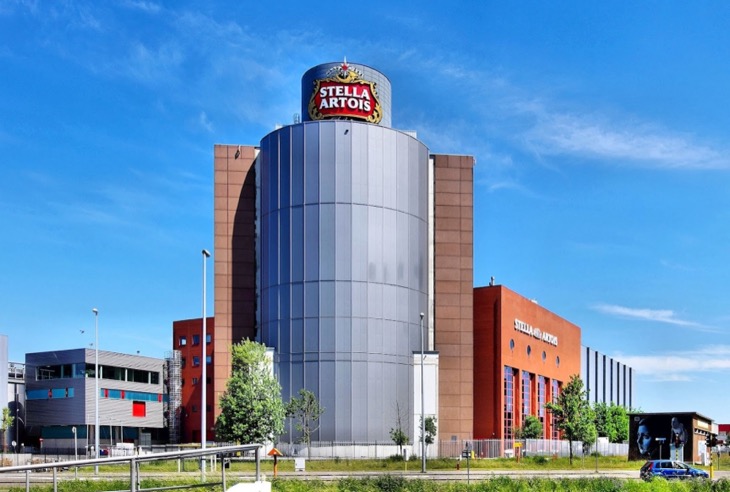
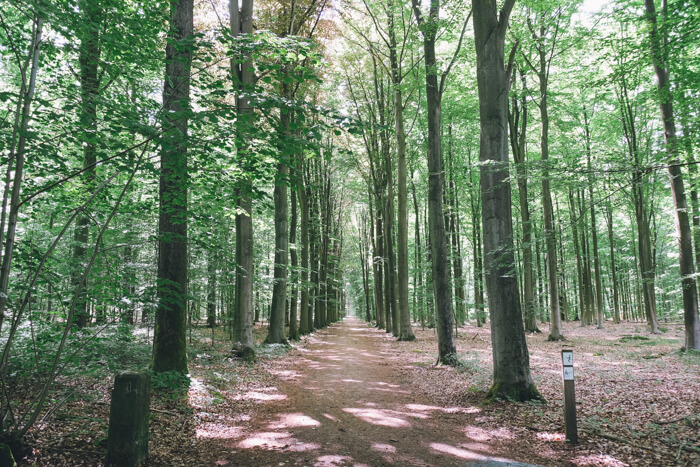
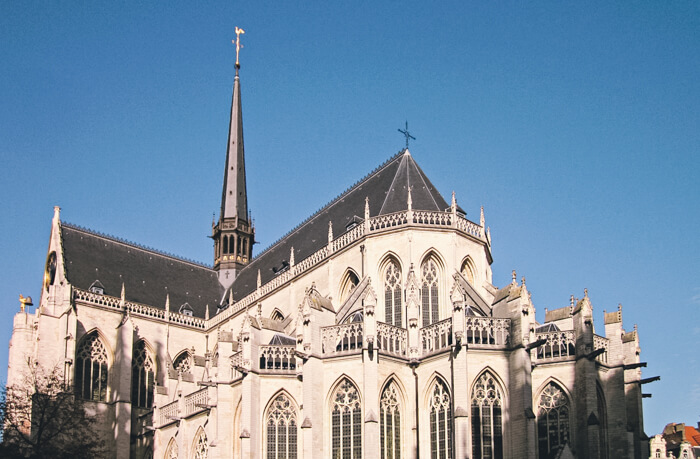
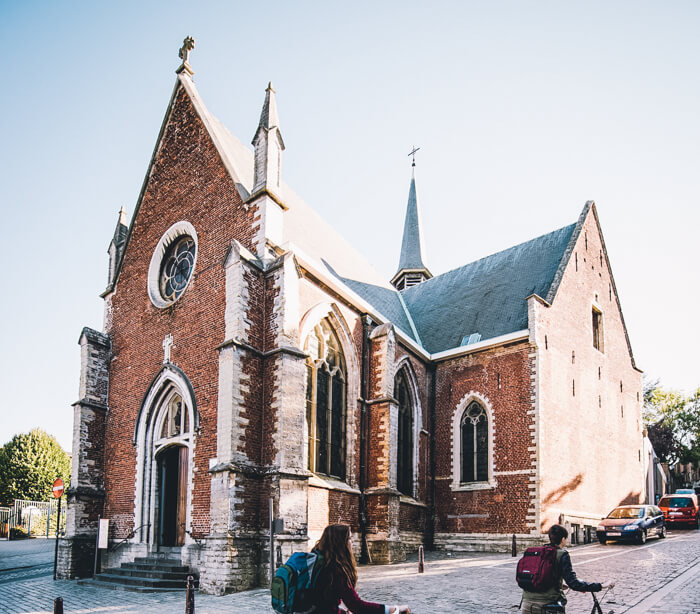
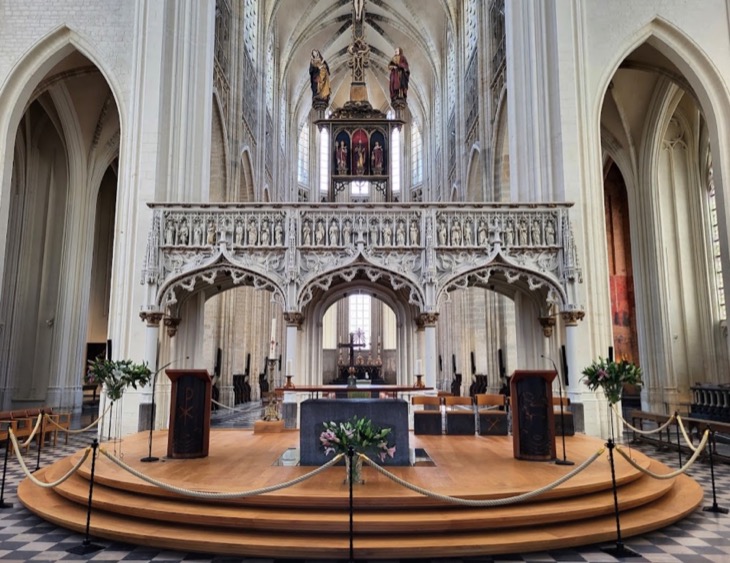
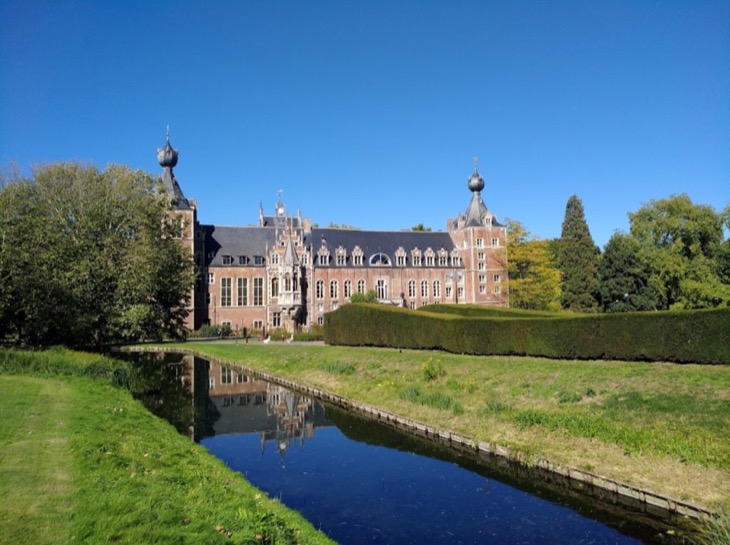
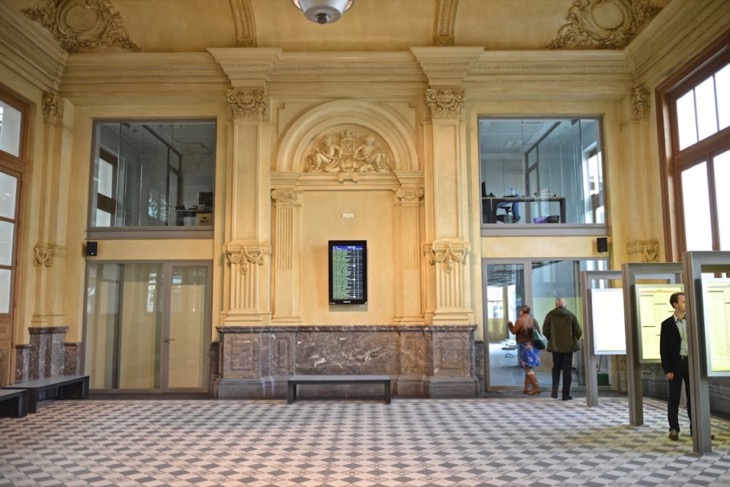
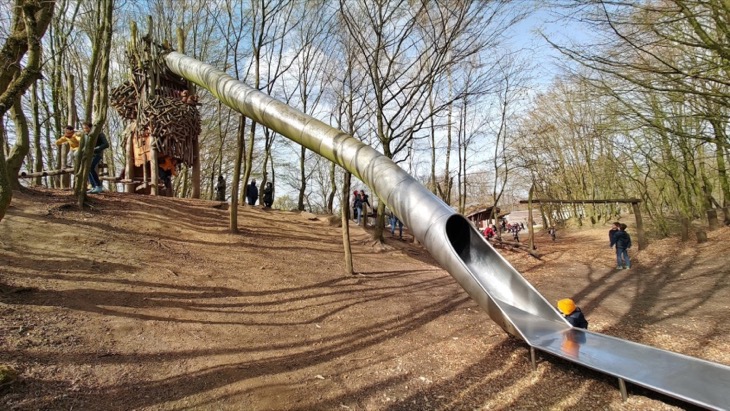
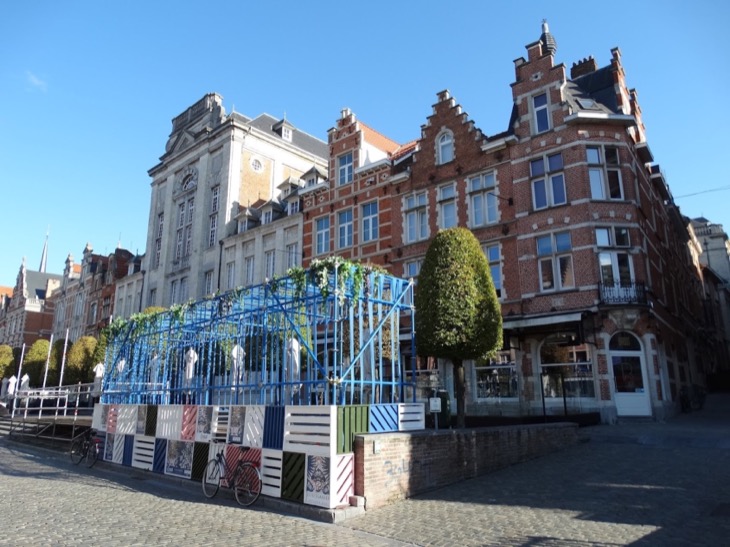
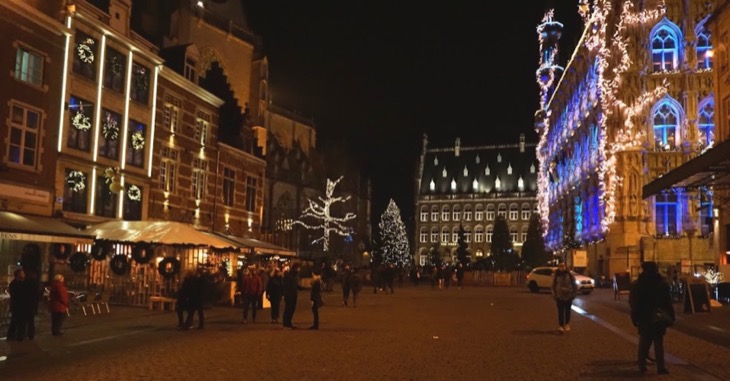
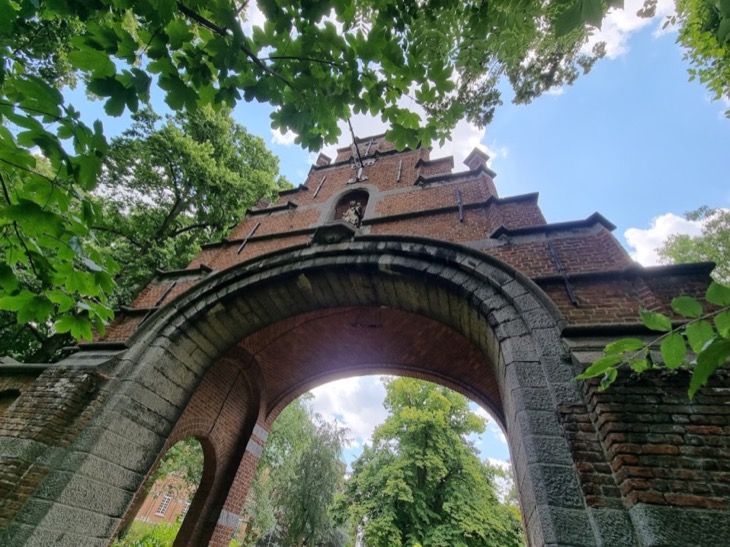
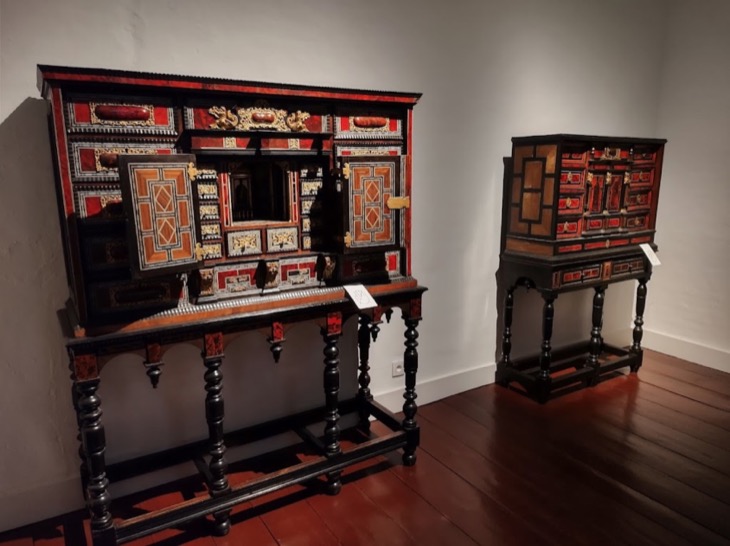
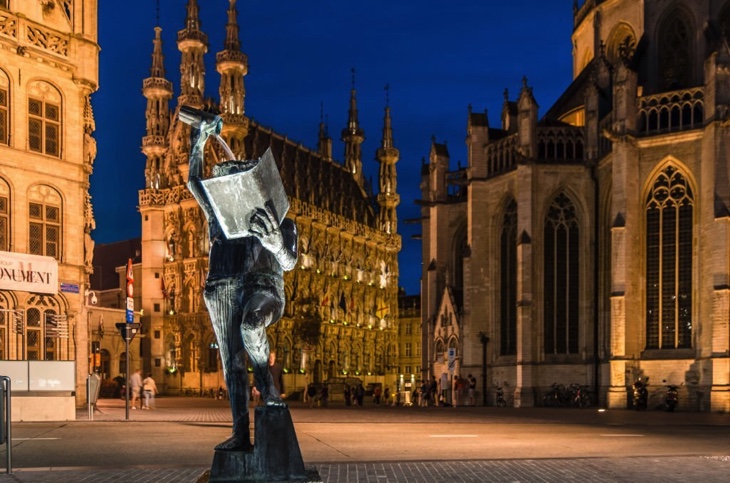
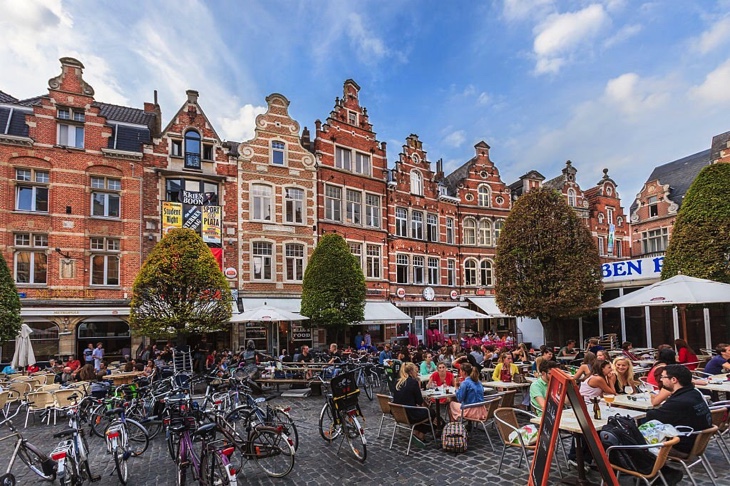
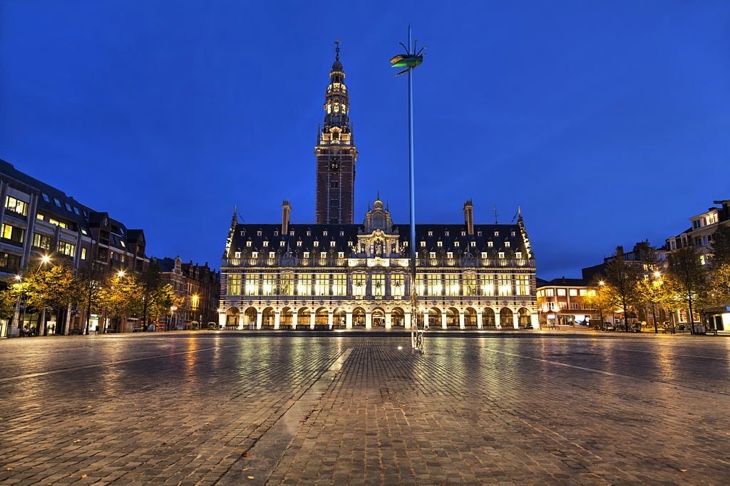
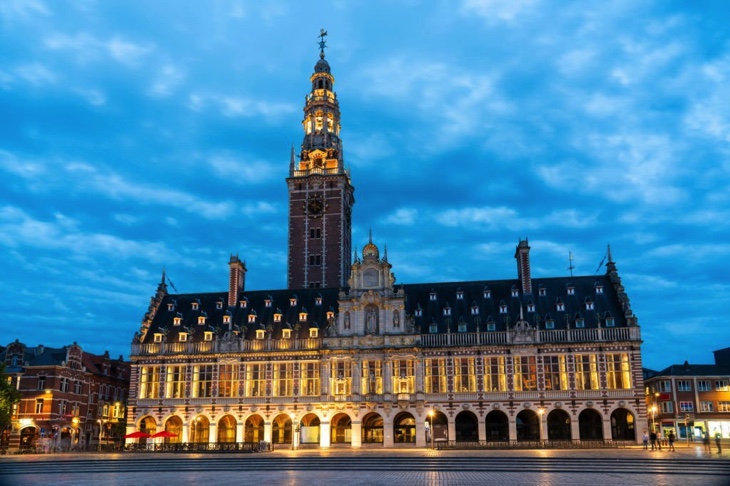

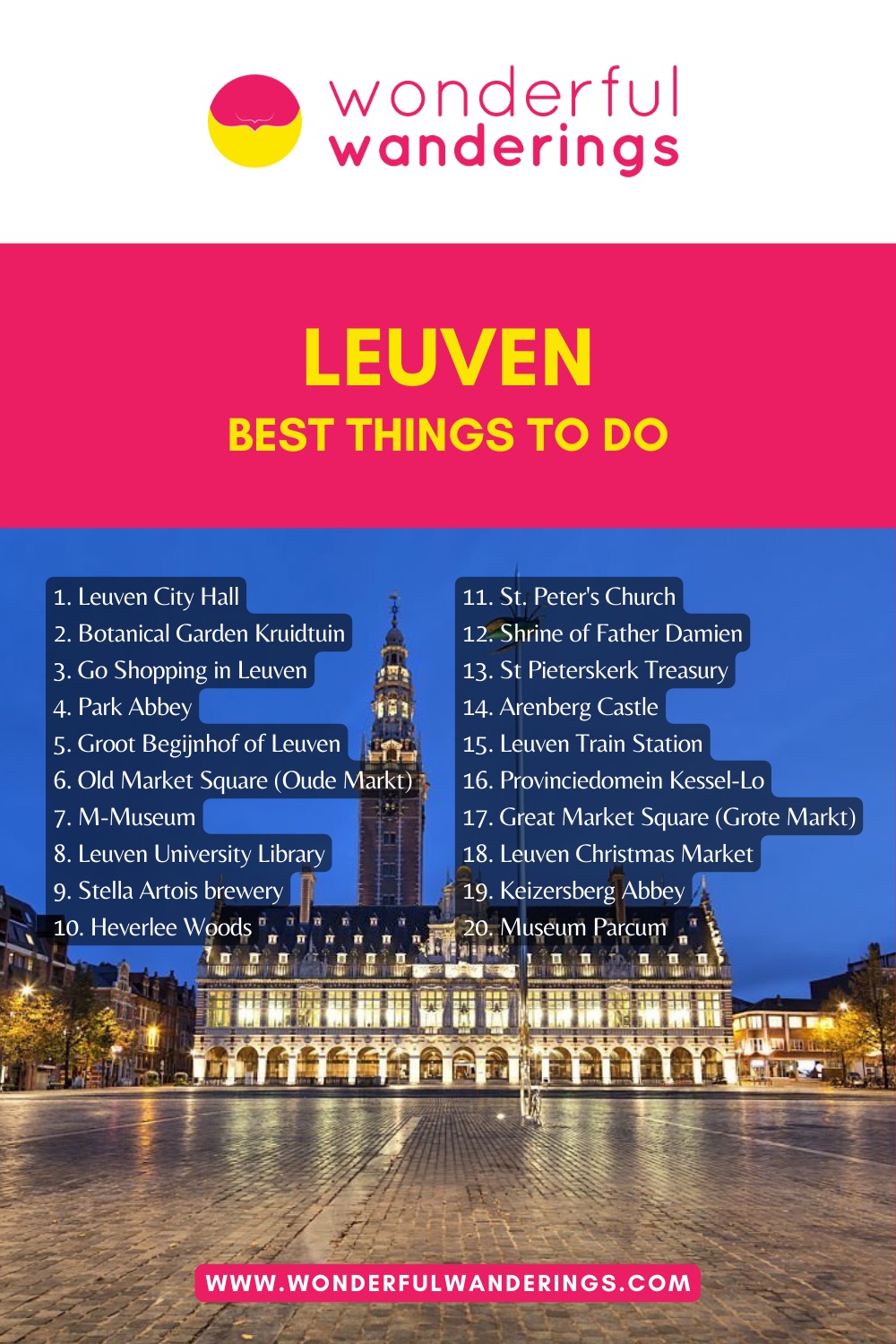
samrat says
It’s a great list Sofie. I have very fond memories of Leuven ;-)
Other than that, I was amazed by the sight of a needle thru a beetle.
Sofie says
Hahaha, it sure is a peculiar thing to see :)